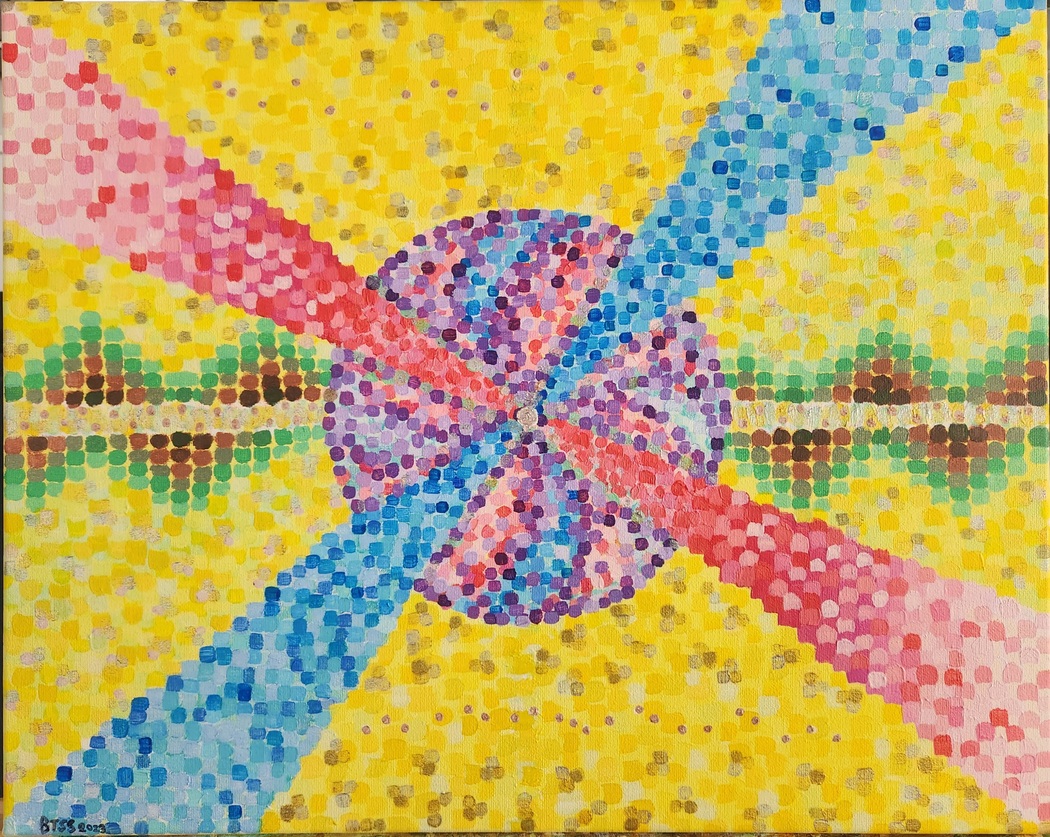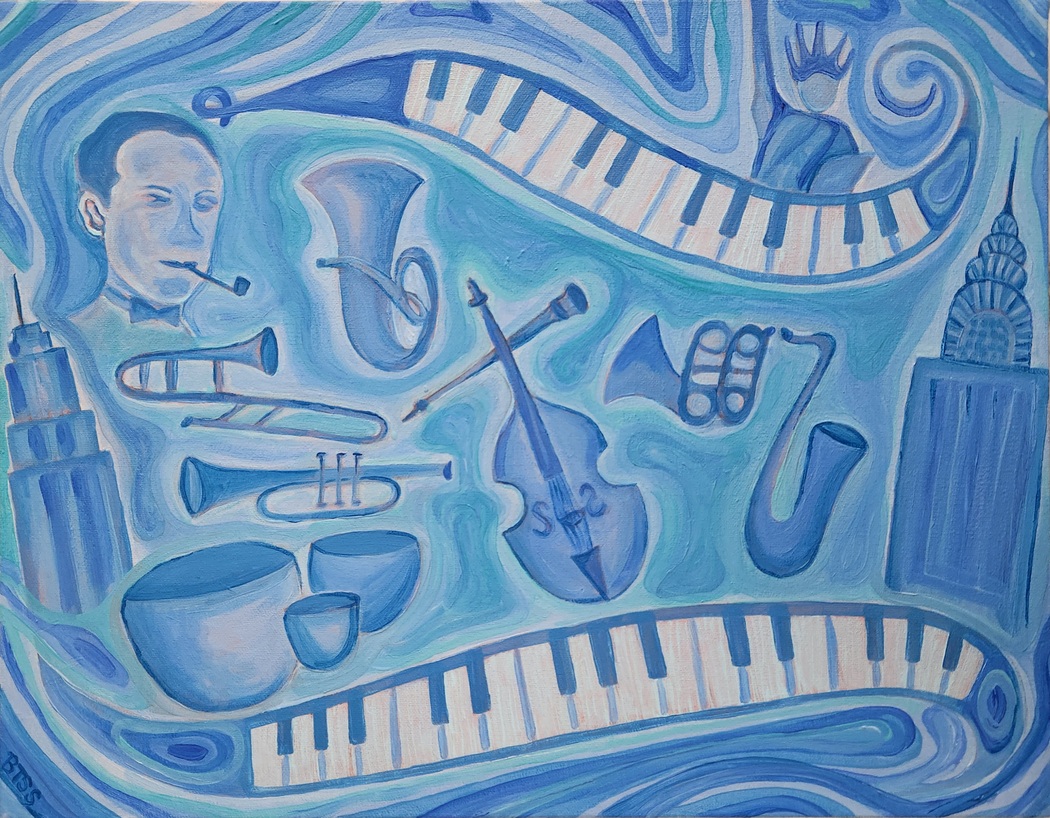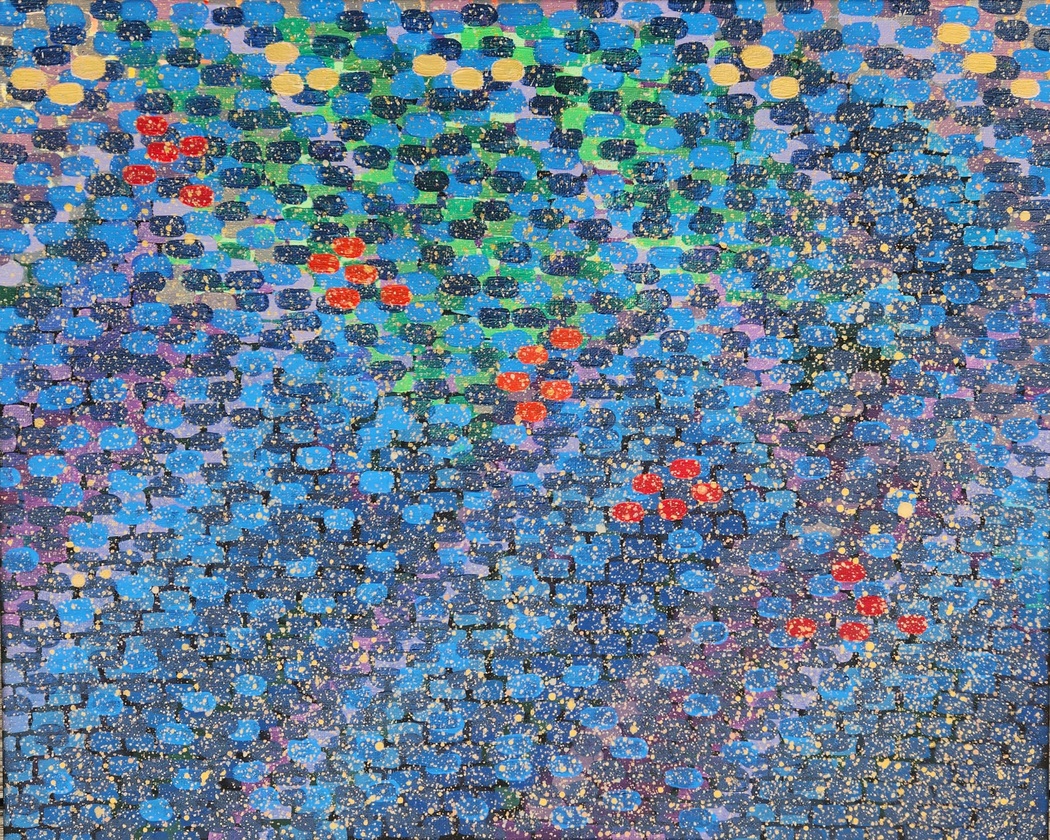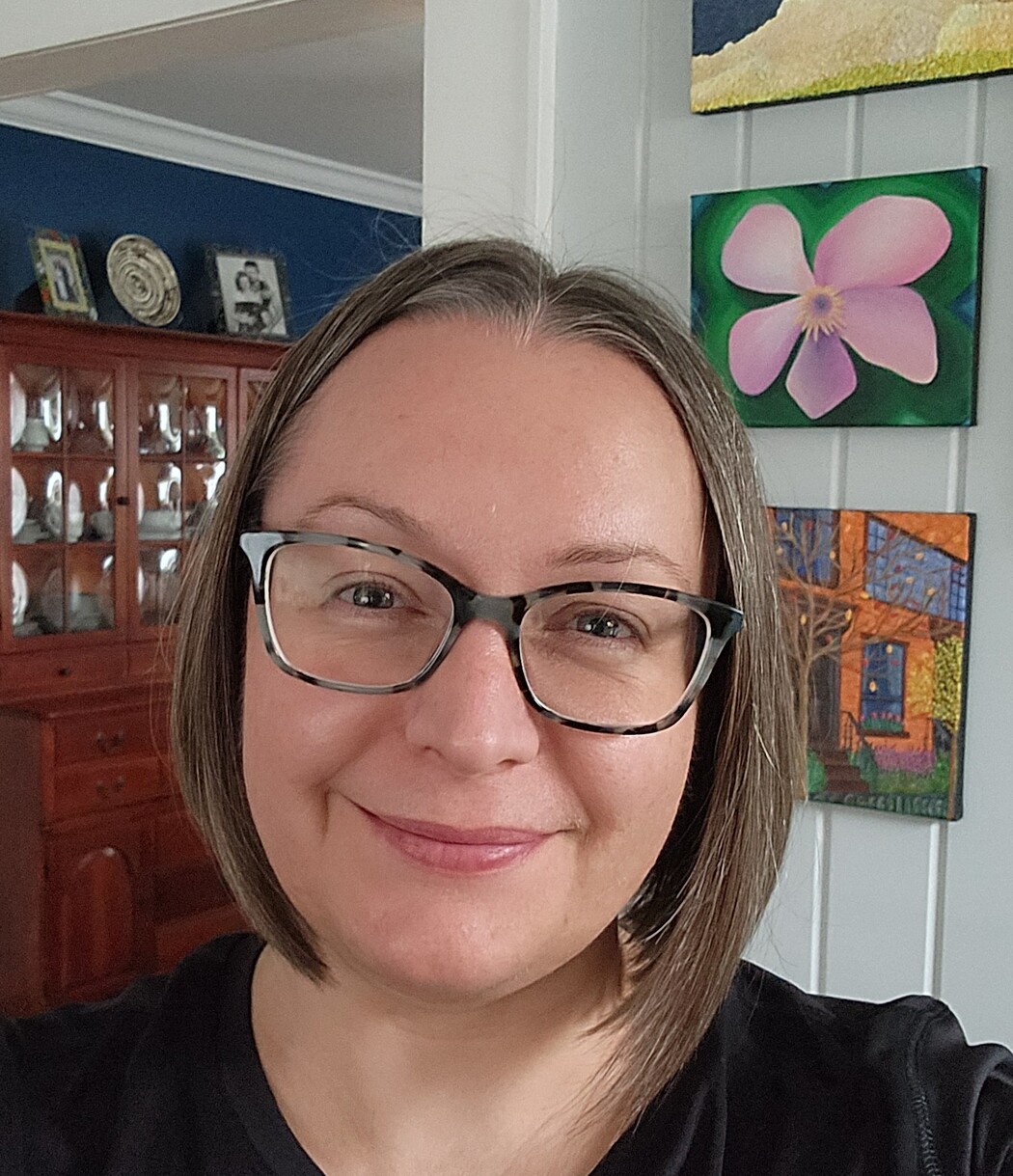Bernardica T Sculac Stern
Your paintings are deeply inspired by music. How do you choose which compositions to translate into visual art?
It starts with my love for a particular musical work. One of my favorites is In the Steppes of Central Asia, an orchestral work by the Russian composer Alexander Borodin. I even have favorite performances from listening to different orchestral interpretations. As such, it may not be a surprise that I had several visual iterations of this music. The first was a 5-part series of prints from copper-plate etchings done when I was a printmaking student at the Art Students League of New York (ASLNY); unfortunately, when the COVID pandemic closed the studios, I was forced to pivot to other techniques and materials. While re-conceiving the music as a painting, I created at least a dozen versions, although each had red and blue to depict the main musical themes, and earth-tones for the secondary theme. While this was the third painting (Borodin’s Steppes) in my “Music as Paintings” series, it was actually the first musical work that I wanted to depict as visual art.
I now keep a running list of my most-loved music, along with notes about the visuals I want to depict, such as colors, shapes, mood, inspirational artistic styles, and so on.
Can you describe your process when translating a piece of music into a painting? Where do you begin?
Each painting in this series has a different inspiration. The first one completed is based on the choral work If Ye Love Me by English composer Thomas Tallis. I’ve performed it several times, and when rehearsing a piece over and over, it’s not unusual for me to dream about it. However, with If Ye Love Me, I had a series of dreams that featured greens, sometimes with accents of yellow, gold, and orange. I took this as a sign that my subconscious wanted me to express this music visually and when I started to plan out the painting (which I titled, Tallis’ Comfort), I decided to depict the voices and chords with oranges and use the green as a contrasting accent.
Regarding my painting Pärt’s Cantus, the seeds of inspiration began 19 years ago when I was utterly transfixed while watching the breathtaking ballet Kiss, choreographed by Susan Marshall. The music for Kiss is a work by Estonian composer Arvo Pärt titled Cantus in Memoriam of Benjamin Britten. The whole production was so glorious that it haunts me to this day; I was compelled to purchase the music. When I started to plan the painting, I wanted to highlight not only components of the bittersweet beauty of the music, such as the chord progressions and bells in the orchestral score, but also my visualization of its effect on me.
The spark for the Lauridsen’s Mysterium painting came from O Magnum Mysterium, a wonderful choral piece by the American composer Morten Lauridsen. I felt the meditative beauty of the music during each rehearsal of “O Magnum” with my chorus. I knew I wanted to evoke calm in the viewer. As such, I thought of curves and blending of blues and greens, and let muscle memory take over and trusted things would work out. It did; I was happy with the results.
 Bernardica Sculac Stern | Borodin Steppes | 2023
Bernardica Sculac Stern | Borodin Steppes | 2023
What role does emotion play in your creative process?
Emotion is both my inspiration and product. I believe that artists are acutely aware of their emotions. Vincent Van Gogh once wrote to his brother Theo of his passionate hope that people would someday look at his paintings and see — really, truly see — that “this man felt deeply.”
All forms of art have tremendous power to make us feel big, huge emotions. Sometimes we don’t even know why we’re reacting in a particular way; for example, seemingly spontaneous crying. The culmination of experiences, education, and relationships have shaped each of us into unique individuals with unique points of view, including how we feel about things. Through my paintings, I’m depicting how a piece of music makes ME feel. Thoughts, planning, practice – these are the tools I’m using to realize my vision, but the vision itself is describing my emotions. I believe that my paintings are my unique contribution to art.
You mention influences like Georgia O’Keefe, Alma Thomas, and Gustav Klimt. How do these inspirations manifest in your work?
My artistic development is a mix of formal education as well as regular viewing of other artists’ work. I walk through a gallery or museum to enjoy the beauty of the art, to be challenged by ideas being depicted, to be challenged to replicate a style or theme, and to learn about the techniques used in creating each piece.
I’ve drawn inspiration from Klimt’s use of metallics such as his Woman in Gold, from Thomas’ contrasting color combinations as seen in her abstract Red Roses Sonata, from O’Keefe’s abstract studies, and many others. Inspirations include styles, color combinations, use of materials, subject matter, and innovations in craft.
I also find inspiration in thought and process from the work of Hilma af Klint: she let her spirituality guide her work and had the utmost confidence in it. She knew she was ahead of her time, and therefore took steps to ensure her work would be displayed at a time in the future when it would be appreciated differently.
 Bernardica Sculac Stern | Gershwin Rhapsody | 2024
Bernardica Sculac Stern | Gershwin Rhapsody | 2024
Have you ever collaborated with musicians while creating your music-inspired works?
Not directly as of yet. As a singer I collaborate with musicians regularly in rehearsing for performances. Group rehearsals include active participation as well as “down-time” of quiet waiting while another part/instrument is focusing on a portion that doesn’t involve my particular part. In these times, my mind wanders. Inspiration can come in many ways and in different times, including these moments of focusing elsewhere. I feel that artists of all types use a combination of disciplined focus and detachment as a way of working through an artistic concept. I love that Albert Einstein would often turn to his violin as a way to calm his mind while working on a math problem. It’s a great reminder that dedicated hard work needs to be balanced with mind-rest, so that inspiration has space to bloom.
What do you hope the viewer feels or experiences when seeing your music paintings?
I feel deeply when I listen to music, and my paintings are an expression of those feelings. I hope others feel deeply too: either because of the painting itself, or by listening to the music that inspired it. I spent a long time not sharing my art. It’s not easy to put your heart out into the world where some may want to criticize and denigrate your creation. But when I realized others may find joy, then sharing became much easier. I know there will be some who don’t like my paintings, but I still consider it progress that I got them to feel something when looking at them. Maybe their feelings will awaken their own creative desires; maybe they will feel compelled to share their own art.
 Bernardica Sculac Stern | Pärt Cantus | 2022
Bernardica Sculac Stern | Pärt Cantus | 2022
Do you approach painting differently when you’re working from visual inspiration (like landscapes or flowers) compared to musical inspiration?
Yes, it’s a very different process for me.
Most of my work ranges in style from representational to impressionistic, and often with some sort of a visual starting point to which I’ll add my own flair to realize. Working in expressionism has been challenging, but in the best of ways.
My first printmaking class was at Parsons School of Design. In this class I created a linear abstract series, as well as a somewhat surreal series called Love Everlasting. My turning point into conceptual work was a painting celebrating the 150th anniversary of the Metropolitan Museum of Art in NYC. The Met held an art challenge as part of this anniversary, though I did not submit in time. However, I’m so happy I created the painting because of what I learned from it. The process of thinking through and planning what I wanted to create, including several different versions, took months. It has become a sort of process-blueprint I now use to create my music-paintings.


Leave a Reply